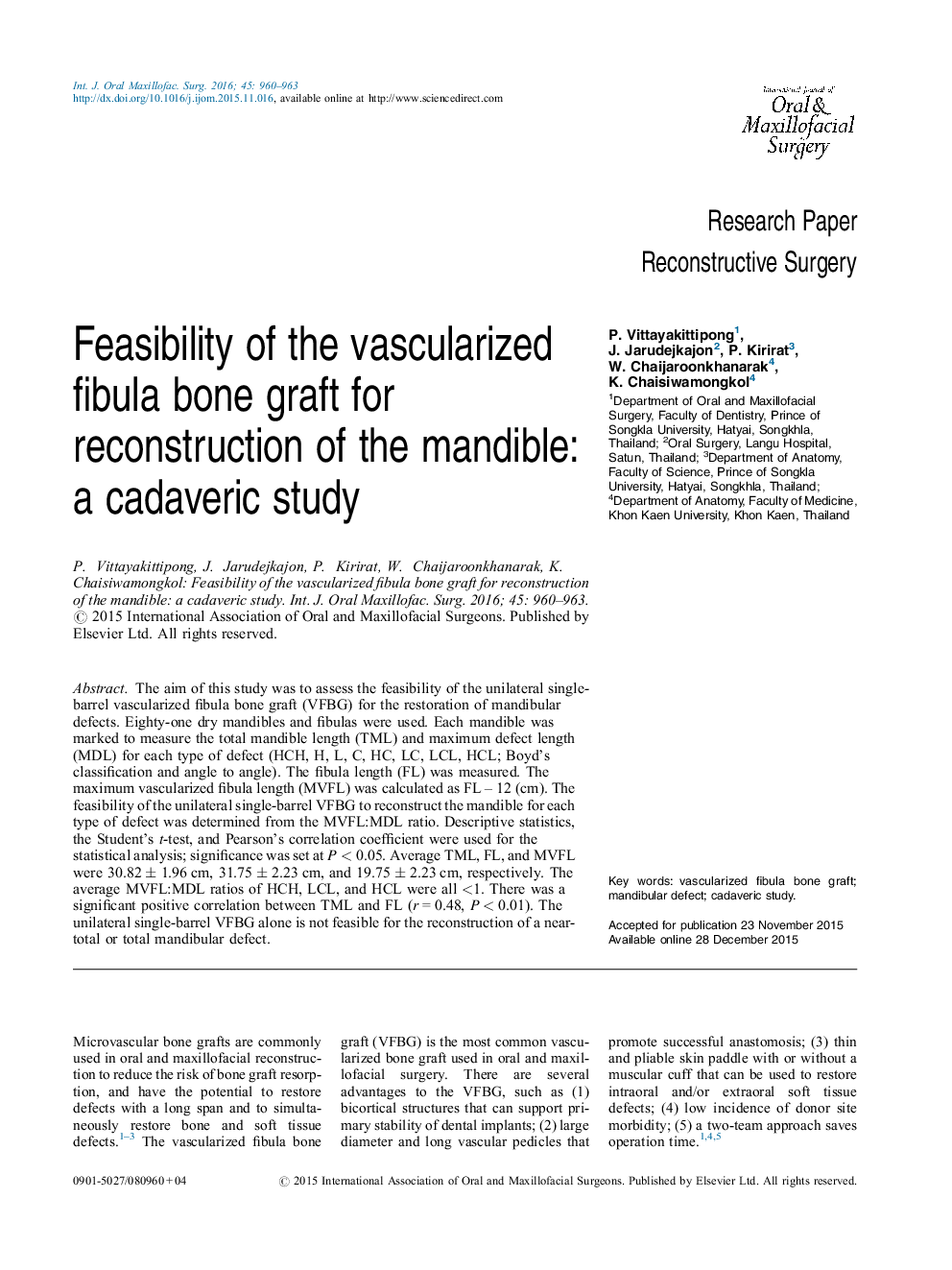| Article ID | Journal | Published Year | Pages | File Type |
|---|---|---|---|---|
| 3131812 | International Journal of Oral and Maxillofacial Surgery | 2016 | 4 Pages |
The aim of this study was to assess the feasibility of the unilateral single-barrel vascularized fibula bone graft (VFBG) for the restoration of mandibular defects. Eighty-one dry mandibles and fibulas were used. Each mandible was marked to measure the total mandible length (TML) and maximum defect length (MDL) for each type of defect (HCH, H, L, C, HC, LC, LCL, HCL; Boyd's classification and angle to angle). The fibula length (FL) was measured. The maximum vascularized fibula length (MVFL) was calculated as FL – 12 (cm). The feasibility of the unilateral single-barrel VFBG to reconstruct the mandible for each type of defect was determined from the MVFL:MDL ratio. Descriptive statistics, the Student's t-test, and Pearson's correlation coefficient were used for the statistical analysis; significance was set at P < 0.05. Average TML, FL, and MVFL were 30.82 ± 1.96 cm, 31.75 ± 2.23 cm, and 19.75 ± 2.23 cm, respectively. The average MVFL:MDL ratios of HCH, LCL, and HCL were all <1. There was a significant positive correlation between TML and FL (r = 0.48, P < 0.01). The unilateral single-barrel VFBG alone is not feasible for the reconstruction of a near-total or total mandibular defect.
